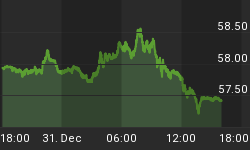Just over three months after the authorities lifted the four-decade ban on crude oil exports, the U.S. has actually exported less this year than it did over the same period the year before, when the ban was still in place.
According to Clipper Data market intelligence cited by the Financial Times, we've seen a 5 percent decline in U.S. crude oil export volumes since the beginning of this year. The data suggests that on average we are exporting (waterborne) 325,000 barrels per day now, compared to 342,000 barrels per day during the first months of 2015.
And there's no official data yet -- not since the beginning of this year, when the U.S. Energy Information Administration (EIA) noted that during the week ending 22 January, the U.S. had exported just shy of 400,000 barrels of oil, which again was 25 percent less than what was exported for the same week in 2014.
An oil tanker that reached a French port in January was the first post-ban delivery of U.S. crude oil, but things haven't really picked up pace since then.
January's cargoes, totaling about 11.3 million barrels, marked a 7 percent decline from U.S. crude exports in December, according to data by the U.S. Census Bureau. Shipments during January went to Curacao and France, in addition to Canada, the primary destination. The total number of tankers that have set sail with U.S. crude oil will not be known until comprehensive data on February's shipments is released by the U.S. Census Bureau.
The immediate beneficiaries of the ban suspension are gas and oil companies such as Chevron and Exxon Mobil -- among the most tireless lobbyers against the ban -- and oil trading giants such as Vitol Group BV and Trafigura Ltd Pet.
Europe and Asia are flooded with oil from Russia and the Middle East, though the first two shipments to leave the U.S. post-export ban went to Europe: one to Germany and the other to France, to be used in a refinery in Switzerland. Dutch media outlets reported in January that a tanker from Houston had reached Rotterdam port, but this remains just a drop in the global export bucket.
In Asia, even China's state-run Sinopec -- the world's second-largest refiner -- has imported a consignment of U.S. oil, according to a Reuters source. Japan's Cosmo Oil was the first Asian buyer of U.S. oil, purchasing some 300,000 barrels of U.S. crude in mid-January, which will be delivered to its refineries in mid-April.
The very first South American country that will import U.S. crude oil is Venezuela. In early February, Venezuela's state-run oil company PDVSA imported a 550,000-barrel cargo of West Texas Intermediate (WTI) through its U.S.-based Citgo Petroleum affiliate. Venezuela started importing foreign crudes in 2014 amid a fall in its own production - buying mostly Angolan and Nigerian light grades.
WTI is also expected to be exported to Israel, where Swiss commodities house Trafigura will ship some 700,000 barrels. Atlantic Trading & Marketing, the U.S. trading unit of French Total SA, has been planning an export cargo of U.S. crude from Cushing.
Also, earlier this month, Exxon became the first U.S. oil company to export U.S. crude, sending a tanker from Texas to a refinery it owns in Italy.
However, storage is now at the highest level in at least a decade. U.S., crude storage levels hit 487 million barrels in early November, closing in on the 80-year high of 518 million barrels in the last week of February. According to the EIA, about 60 percent of the U.S. working storage capacity is filled.
Globally, the picture isn't much better, with the International Energy Agency (IEA) saying that 1 billion barrels were added to storage in 2015 alone. OPEC has reported that crude oil stockpiles in OECD countries currently exceed the running five-year average by 210 million barrels.
Article Source: http://oilprice.com/Energy/Energy-General/US-Lifted-The-Crude-Oil-Export-Ban-And-Exports-WentDown.html
By Charles Kennedy of Oilprice.com
















